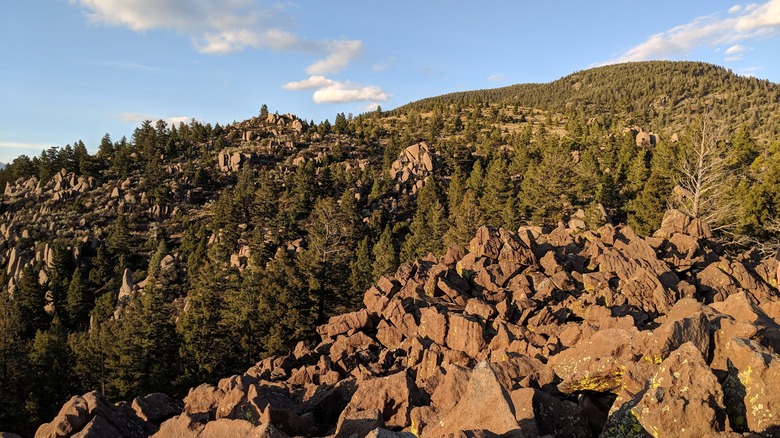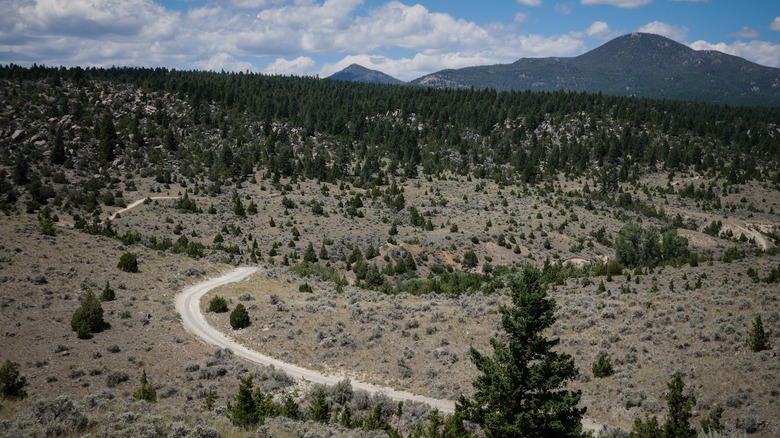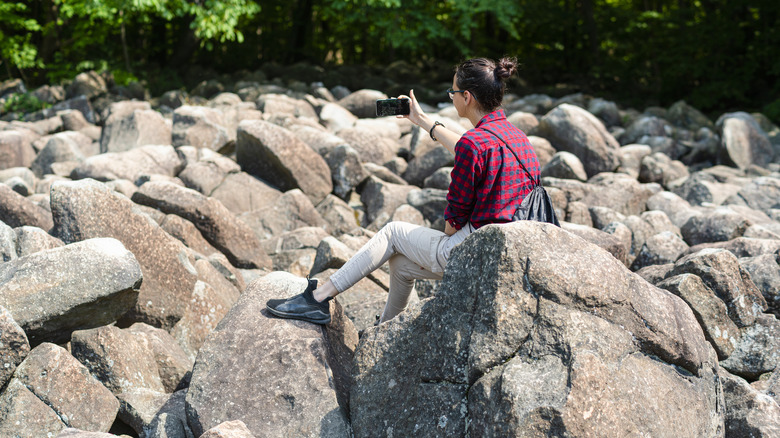Tucked In A Scenic Mountain Valley Is An Odd, Free-To-Visit Montana Attraction Of Ringing Rocks
Montana is home to breathtaking landscapes, from rolling plains to rugged peaks. Just south of the outdoor adventure of Bridger Canyon, the Boulder Mountains hide an unusual natural wonder. If you're ready to explore a spot that really strikes a chord, you'll want to take a detour toward Butte, where the hills hold a symphony of their own: the Ringing Rocks of Montana.
The Ringing Rocks of Montana are a rare geological phenomenon, one of only a handful of such sites in the world — Pennsylvania is also home to a field of ringing rocks. From afar, this peculiar formation appears to be nothing more than a massive pile of boulders. But as soon as you pick up one of the hammers provided on-site and give a rock a tap, the stone chimes with a clear, metallic tone. It's a surreal experience, playing a rock like a musical instrument while surrounded by Montana's wild beauty. The area, known as Pipestone, is also packed with trails for hiking and ATVs, making it a great stop for outdoor enthusiasts.
A rugged ride to the Ringing Rocks
The Ringing Rocks are about 18 miles east of Butte, Montana. The easiest way to get there is to fly into Bert Mooney Airport in Butte, then drive east on Interstate 90. From there, you'll take an exit leading to a rough, 4-mile-long gravel road. While the distance is short, the terrain is uneven and rutted, so a high-clearance vehicle is recommended. If your car isn't up for the challenge, there are pull-off points where you can park and hike part of the way. Before heading out, you might want to stop in town for a bite at Butte's Pekin Noodle Parlor, the longest-running Chinese restaurant in America.
For those looking for a more adrenaline-fueled approach, Pipestone is a prime spot for off-roading. The rugged terrain is ideal for motorbikes, ATVs, and mountain bikes, and outfitters like Ridgeline Rentals and Adventures offer vehicle rentals. After visiting the Ringing Rocks, you can continue riding through Pipestone's maze of trails, which weave through striking rock formations and open plains. If you're staying overnight, Pipestone Village and Hotsprings offers unique lodging options, from luxury cabins to glamping domes, all equipped with private hot tubs filled with natural spring water.
The Ringing Rocks site is completely free and open year-round. Hammers are provided at the site, so you can experiment with striking different rocks to discover which ones produce the clearest tones. Only about a third of the rocks ring, so testing them out becomes an interactive challenge. Just be sure to leave the rocks where they are — removing or breaking one can disrupt the entire formation's ability to resonate.
The science behind the sound
Despite decades of study, geologists still don't have a definitive answer for why the Ringing Rocks make their dinging music. The rocks themselves are igneous, meaning they formed from magma that cooled millions of years ago, and they were exposed during the Ice Age as glaciers scraped away layers of earth. Similar ringing rocks have been found worldwide, and some ancient cultures even created musical instruments called lithophones from them. Some researchers speculate that the famous stones of Stonehenge were selected for their ability to ring when struck, though centuries of erosion have muted some of their tones.
There are a few theories about what makes Montana's Ringing Rocks sing. One suggests that the rocks' mineral composition, particularly traces of iron, contributes to the sound, but since most contain only small amounts of iron, this seems unlikely. Another, more widely accepted, theory is that the rocks' placement is principal. "The key is to have the rocks suspended to resonate," Stuart Parker, a geologist from the Montana Bureau of Mines and Geology, told Rock & Gem Magazine. "They need to vibrate like a gong." Whatever the reason behind their unique acoustics, the real magic of the Ringing Rocks lies in getting to experience the landscape's music. Maybe it's not about the explanation, but the exploration.


